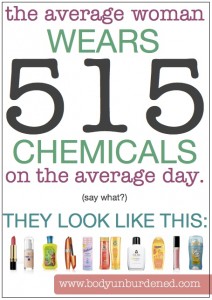This article is from http://www.watercure.com/wondersofwater.html
How to test whether a simple home remedy for dehydration can help relieve your rheumatoid arthritis pain
Before I give you the simple home remedy for dehydration that has helped relieve rheumatoid arthritis pain, let’s first review:
How water helps your normal joints work.
A joint is a place where two bones meet so your body can move. The bone surfaces are covered with cartilage which is a semi-soft tissue like that found in your nose.
In order for your two cartilage surfaces to glide easily over one another, the cartilage needs to be full of fluid—so its surfaces are smooth.
If your body or your cartilage is a little low in water, your cartilage surfaces will become dimpled, like the wrinkled skin of an old apple. Two wrinkled cartilage surfaces in your joint will not glide over each other very easily. They will rub, and stick to each other. You’ll get a mild abrasion on your cartilage, like a skin scrape from falling down and more. You’ll feel better and move more gracefully when your joints have enough water.
Dehydration may be a major trigger for the start of arthritis.
Many chronic and acute signals of dehydration were discovered in a stress filled environment in Iran by Dr. F. Batmanghelidj.
In his book, “You’re not sick, You’re thirsty!”, he describes many very painful conditions that he healed solely by having patients drink more water,
He proposed that dehydration is a major trigger for your rheumatoid arthritis.
His theory opens a new perspective on a cause and potential treatment for rheumatoid arthritis.
Here are additional aspects of your life that improve by drinking optimal amounts of water:
1. Promotes easy weight loss,
2. Relieves heartburn, and constipation,
3. Improves food digestion and nutrient absorption,
4. Enhances germ fighting ability of immune system,
5. Catch fewer colds, flu and other infections,
6. Improves memory and clearer thinking,
7. Restores normal sleep patterns,
8. Increases your ability to reach goals,
9. Reduces stress, anxiety, and depression,
10. Makes skin smoother,
11. Gives luster and shine to the eyes,
12. Gives higher energy,
13. Washes out toxic deposits in tissues,
14. Improves flexibility,
15. Normalizes blood pressure and cholesterol,
16. Increases libido,and more.
Could your rheumatoid arthritis pain– and the rest of your body– be signaling that you’re thirsty?
A home remedy for dehydration and your pains would be to recognize and quench your thirst.
Signals of thirst
When your joints hurt, you may not feel thirsty.
Unfortunately, many of us, probably you, may not be able to tell apart the signals for thirst from hunger because we weren’t usually taught this as children.
A dry mouth is a signal of extreme thirst. Low energy, irritability, and pain are all signals of thirst.
In addition, your ability to sense thirst diminishes as we age. In fact, a clinical study showed that elder men had lost most of their recognition of thirst.
The optimal amount of water and sea salt
You, like me, can only use the water we drink today.
Each and every day, you use up approx. 56-64 oz. of water in your daily life by breathing, eating, perspiring, moving, and removing wastes. In other words, you use up 7-8 glasses (8 oz. each) of water.
In addition, some beverages –like coffee, tea, and caffeine containing soda –cause your body to excrete more fluid than the beverage that you just drank.
Other beverages like milk and juice require water to digest (just like food). Otherwise, your blood and lymph becomes fuller as it picks up the digested nutrients.
This is why you should only count the amount of water you drink.
How many 8 oz glasses of water do you drink each day? (This does not include coffee, tea, soda, juice, milk or any colored, flavored fluid.)
a) none
b) 1-2 glasses
c) 3-4 glasses
d) 5-8 glasses
e) 9 or more
For a simple home remedy for dehydration, let’s compare how many glasses of water you drink now with how many Dr. Batmanghelidj recommends.
Simple Home Remedy for Dehydration:
To figure out how much you need to drink, Dr. Batmanghelidj recommends 1 oz of water for every 2 lbs. or 0.9 kg of body weight in his home remedy for dehydration.
So, if you weigh 125 lbs. (57 kg), Dr. Batmanghelidj recommends that you drink at least 7-8 glasses (1.75- 2 liters) of refreshing water each day with a ½ teaspoon of sea salt to replenish your lost salt in sweat, etc.
Or if you weigh 200 lbs.(91 kg), he recommends that you drink 12-13 glasses of water (3-3.1 liters ) and eat 2/3 teaspoon of sea salt in your foods each day.
If you exercise and sweat a lot, then he recommends that you drink 2-4 glasses more with a couple of extra pinches of sea salt.
However, it may be easier to remember to drink 2 glasses (8 oz each) of water approx. 30 min before each meal and drink 1 glass of water approx 1 ½ hr after each meal.
Dr. F. Batmanghelidj notes that he has even observed patients who are taking diuretics, improve with his water and sea salt regimen.
As with all changes, it is often good to begin changes gradually. For example, you could choose to begin drinking 1 extra glass of water approx 30 min before each meal in addition to your regular water for several days and then increase it.
When you are drinking optimal water, it’s also important to ingest enough minerals, like sea salt.
Sea salt is essential for your healthy life. It contains about eighty mineral elements that the body needs.
Trace minereals are vital for many essential functions. The minerals in sea salt improve brain performance, bone health, muscle tone, circulation, kidney excretion, digestion and lung functions.
One of the easiest ways to savor sea salt is to season your food with it.
How much sea salt do you eat each day on average?
a) none
b) less than 1/8 teaspoon sea salt
c) 1/8 – ¼ teaspoon sea salt
d) ¼ – ½ teaspoon sea salt
e) more than ½ teaspoon sea salt
Sea salt can be in your food or taken as a little dab placed on your tongue each time you drink 2 glasses of water. After drinking the first glass of water, put a pinch of sea salt on your tongue—it tastes salty but ok. Then drink the second glass of pure refreshing water.
Note, if you eat many salty foods, then you may be getting enough salt.
However, sea salt or salt found naturally in foods contains many other minerals essential for your healthy body.
Since I’ve been following this home remedy for dehydration, which is based on Dr. Batmanghelidj’s water cure program, my knees don’t creak. It certainly helps and combined with the additional approaches has given me more energy, more strength, more clarity, and more joy de vivre! You’d probably enjoy the same or more benefits.
When you’re drinking more water, the color of your urine will become paler. When you’re drinking the optimal amount of water and ingesting sea salt, your urine will be a very pale yellow.
For further details, you may want to purchase one of Dr. Batmanghelidj’s books, “You’re not sick, You’re thirsty! Water for Health, for Healing, for Life”, or “Your Bodies Many Cries for Water, or “How to Deal With Back Pain or Rheumatoid Joint Pain”.
If you are concerned about your water or you’d prefer a better tasting water, check out reviews of different bottled waters, water purifiers and water filters.
You can find several brands of sea salt in health food stores. Just read the label. Some contain sugar (dextrose) and other additives. My favorite sea salt is Redmond’s Sea Salt.
In addition, most sea salt is not iodized so include a source of iodine such as deep sea fish, or kelp in your diet.
Although increasing water consumption while taking small amounts of sea salt has not induced any reports of negative, side effects, it may be prudent to consult your healthcare provider, especially if you have any kidney problems.
Please note that the information on this website ( http://www.watercure.com/wondersofwater.html) is a sharing of information and knowledge from the research and experience of Dr. Molnar-Kimber and her community. It is not intended to diagnose nor treat any disease or precondition nor replace your one on one relationship with a qualified health care professional. It also is not intended to be medical advice. However, it is often observed that patients who take a major interest in their disease and learn as much as they can about their disease and potential treatments often improve faster than those who don’t. Dr. Molnar-Kimber encourages you to make your own health care decisions based upon your own research and discussions with your qualified health care professional.




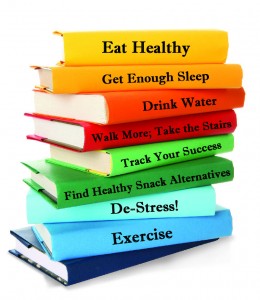
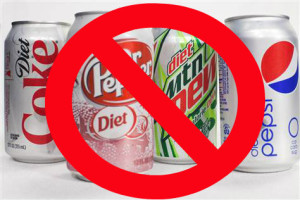
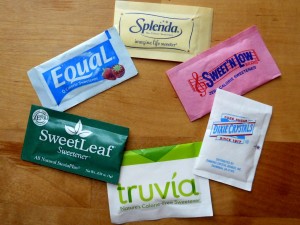 The bottom line here is that it is really best to stay away from soda all together. Look at your consumption of any sugar and/or sugar-like substances, and do your best to eliminate or at least reduce its presence in your diet. The only safe low calorie sugar alternative is Stevia, which comes from a plant. Personally I do not enjoy the flavor of stevia as it is much sweeter than sugar, but if you can take the taste, at least you know you are eating something natural rather than manufactured.
The bottom line here is that it is really best to stay away from soda all together. Look at your consumption of any sugar and/or sugar-like substances, and do your best to eliminate or at least reduce its presence in your diet. The only safe low calorie sugar alternative is Stevia, which comes from a plant. Personally I do not enjoy the flavor of stevia as it is much sweeter than sugar, but if you can take the taste, at least you know you are eating something natural rather than manufactured.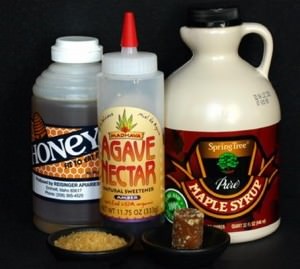
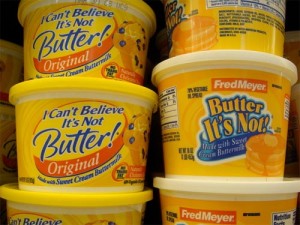 So this is a hot topic: Should we eat butter, with its high fat content, or switch to one of the many low calorie alternatives offered today? When I was young, margarine was the big butter alternative touted to have lower saturated fat and cholesterol. Of course years later we realized that margarine is actually packed with trans-fat,
So this is a hot topic: Should we eat butter, with its high fat content, or switch to one of the many low calorie alternatives offered today? When I was young, margarine was the big butter alternative touted to have lower saturated fat and cholesterol. Of course years later we realized that margarine is actually packed with trans-fat,  In fact, these low fat miracle products generally have a bunch of junk in them to make them taste good—extra sugar, chemicals, additives—which in the end are
In fact, these low fat miracle products generally have a bunch of junk in them to make them taste good—extra sugar, chemicals, additives—which in the end are 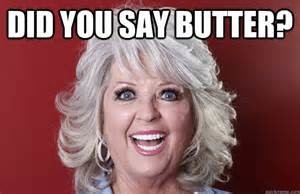
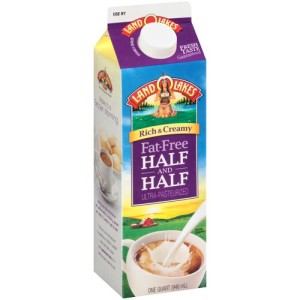 And the oxymorons continue! My first thought would be ‘what’s the point’!!! But I assume people who buy fat free products are under the impression that fat is bad, and this is a way to save fat and calories while still enjoying a ‘fat like’ taste. Well, that ‘fat like’ taste is created by replacing fat with corn syrup and chemical thickeners (carrageenan is most common, and has been linked with cancer in multiple studies) that create the ‘fat like’ flavor and texture. Most fat free products are the same, instead of fat they add corn syrup and chemical additives.
And the oxymorons continue! My first thought would be ‘what’s the point’!!! But I assume people who buy fat free products are under the impression that fat is bad, and this is a way to save fat and calories while still enjoying a ‘fat like’ taste. Well, that ‘fat like’ taste is created by replacing fat with corn syrup and chemical thickeners (carrageenan is most common, and has been linked with cancer in multiple studies) that create the ‘fat like’ flavor and texture. Most fat free products are the same, instead of fat they add corn syrup and chemical additives.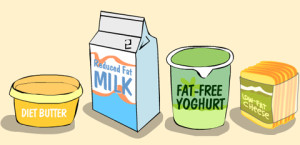

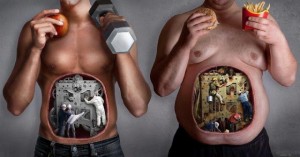

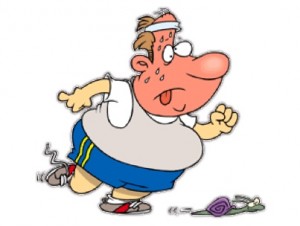 getting more than just our workout in during the week. If a trainer is not possible for you, start by moving more, walking further, parking farther away from places. Take the stairs and not the elevator. Start small and increase gradually, keep a log so you can see the improvement. Check out my workout page for some easy ideas for working out at home.
getting more than just our workout in during the week. If a trainer is not possible for you, start by moving more, walking further, parking farther away from places. Take the stairs and not the elevator. Start small and increase gradually, keep a log so you can see the improvement. Check out my workout page for some easy ideas for working out at home. er. We each need about half our body weight in fluid oz of water daily. This is the best visual image of why
er. We each need about half our body weight in fluid oz of water daily. This is the best visual image of why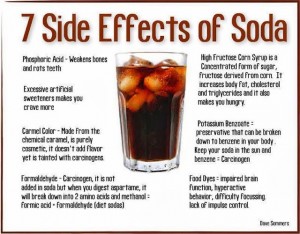
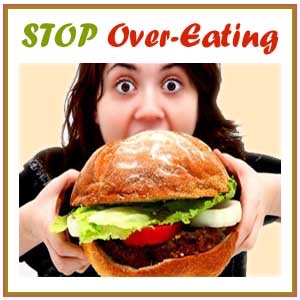 on out of eating, and see it as providing fuel and nutrition for our bodies. Try finding a different habit to comfort you when things don’t go as planned, or a different reward when things go well. This will be a big step in the right direction. Diets can provide a short term solution, but unless you change the way you eat long term, eventually when the diet ends you will resume old habits and gain the weight back again. Slowly purge your pantry of ‘trigger’ foods, those you can’t stop eating, and incorporate healthier choices. For more on this topic go to the ‘Change the way you eat’ page of this site.
on out of eating, and see it as providing fuel and nutrition for our bodies. Try finding a different habit to comfort you when things don’t go as planned, or a different reward when things go well. This will be a big step in the right direction. Diets can provide a short term solution, but unless you change the way you eat long term, eventually when the diet ends you will resume old habits and gain the weight back again. Slowly purge your pantry of ‘trigger’ foods, those you can’t stop eating, and incorporate healthier choices. For more on this topic go to the ‘Change the way you eat’ page of this site.